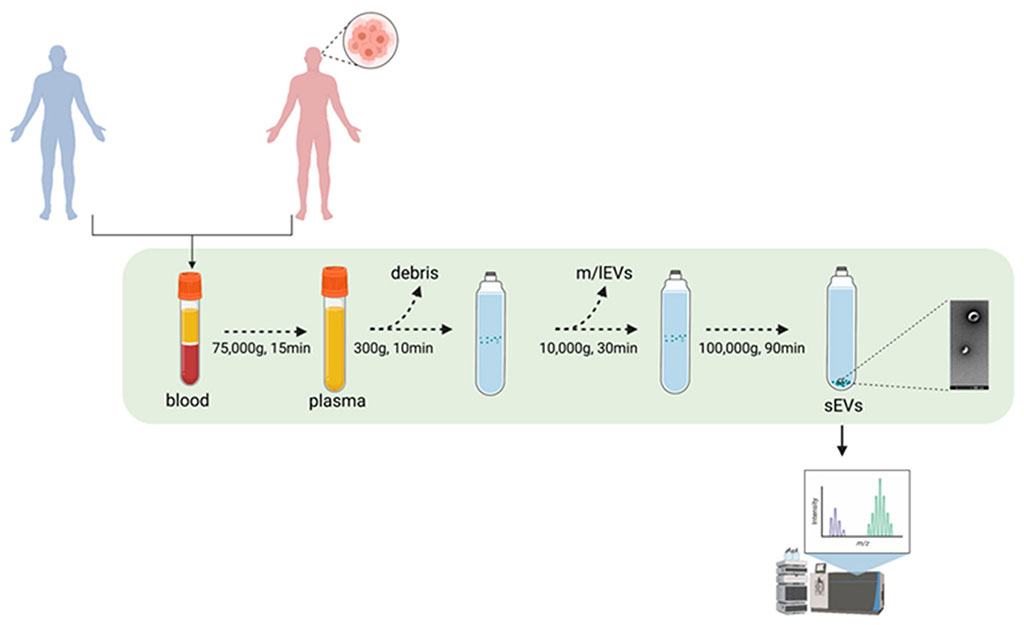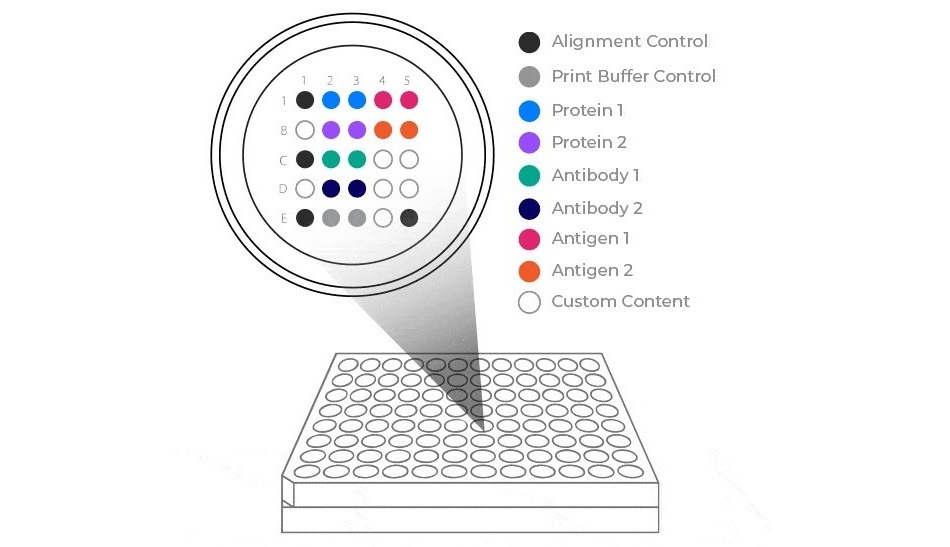Circulating Small Extracellular Vesicles Provide Liquid Biopsy Biomarkers for Glioblastoma Diagnosis
By LabMedica International staff writers
Posted on 24 Jan 2022
A recently published paper described the development of a non-invasive liquid biopsy approach for the identification of biomarkers that could significantly improve glioblastoma (GB) diagnosis and, consequently, patients’ prognosis and quality of life.Posted on 24 Jan 2022
Glioblastoma is the most common primary tumor of the central nervous system and is almost always fatal. The aggressive invasion of glioblastoma cells into the surrounding normal brain makes complete surgical removal impossible, significantly increases resistance to the standard therapy regimen, and virtually assures tumor recurrence. Currently, serial brain imaging is used for detecting tumor progression. However, this modality is challenging, as it is sometimes difficult to determine true progression from pseudo-progression.

Image: Preparation protocol: sEVs from GB patients and healthy volunteers’ blood samples were isolated by ultracentrifugation. The proteomic content of the sEVs were determined using mass spectrometry (Photo courtesy of Biomedicines)
Small extracellular vesicles (sEVs) produced by both GBM and stromal cells are central in the inter-cellular communication that is taking place within the tumor microenvironment. EVs, which include exosomes, microvesicles, and apoptotic bodies, are cell-derived lipid-bilayer-enclosed structures, with sizes ranging from 30 to 5,000 nanometers. In the past decade, EVs have emerged as important mediators of cell communication because they serve as vehicles for the intercellular transmission of biological signals (proteins or nucleic acids) capable of altering cell function and physiology.
EV-based liquid biopsies have been suggested as a promising tool for GB diagnosis and follow up. To identify GB specific proteins, investigators at the University Sussex (United Kingdom) isolated sEVs from plasma samples of GB patients as well as healthy volunteers using differential ultracentrifugation, and their content was characterized through mass spectrometry.
Results revealed the presence in the sEVs of an inflammatory biomarker signature comprising members of complement and regulators of inflammation and coagulation including von Willebrand factor (VWF), IgGFc-binding protein (FCGBP), Complement component 3 (C3), protein S (PROS1), and Alpha-1 antitrypsin (SERPINA1).
Senior author Dr. Georgios Giamas, professor of cancer cell signaling at the University of Sussex, said, "Currently, glioblastoma detection relies on the display of symptoms, magnetic resonance imaging, and invasive tissue biopsies—all of which can delay the identification of the rapidly growing malignant mass. A growing body of research is looking into the possibility of developing liquid biopsies which would afford timely and non-invasive assessment of the disease in patients, starting from just a small sample of blood. Our study, which effectively does this in a small patient group, is a major step forward in the development of an accurate, non-invasive, and time-saving diagnosis method. If we can show that the biomarker signatures of extracellular vesicles obtained from blood samples change/disappear then this could be a huge breakthrough for monitoring the success of treatments too."
The paper was published in the January 7, 2022, online edition of the journal Biomedicines.
Related Links:
University Sussex













